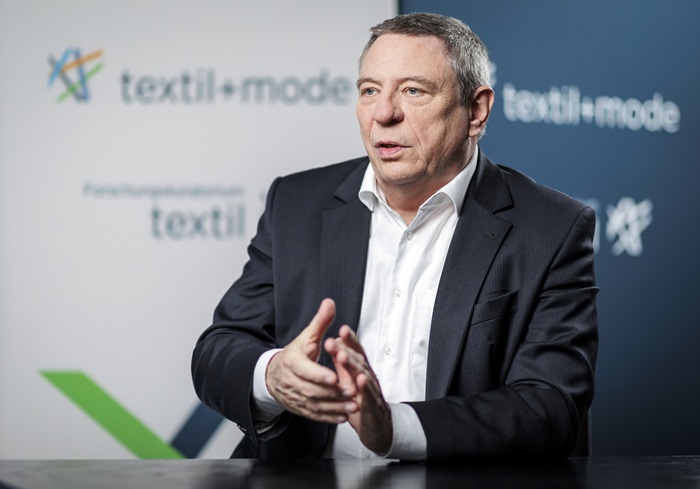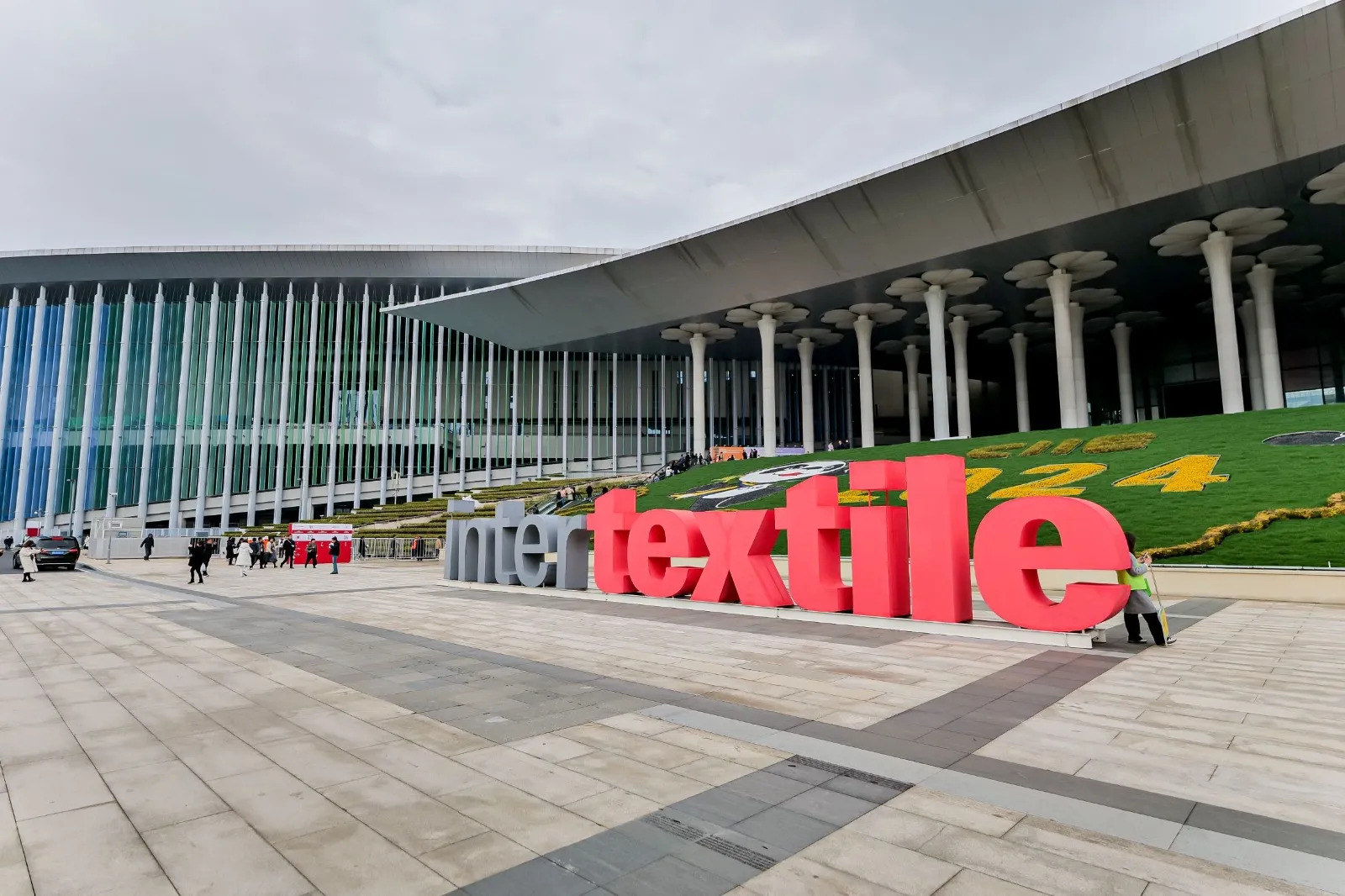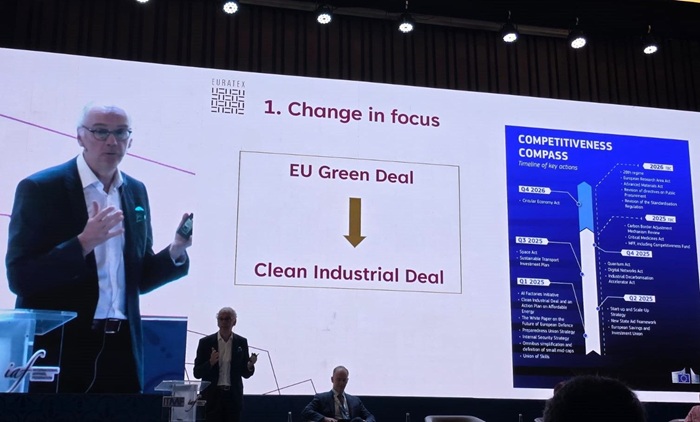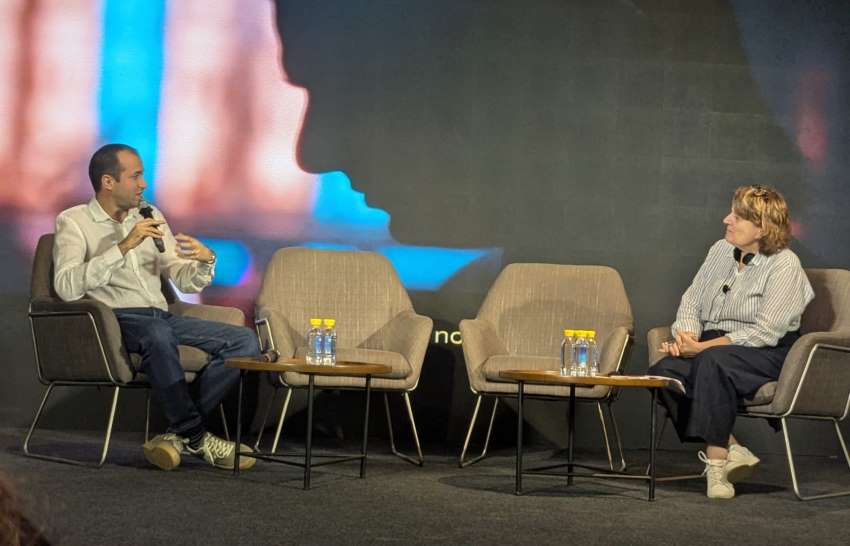FW
Driven by the prospect of competitive pricing and diversified raw material sources, Bangladesh is exploring enhanced trade ties with Pakistan. While current trade favors Pakistan, with Bangladesh importing cotton, yarn, and fabrics, these volumes remain significantly lower than imports from China and India. Historically, strained relations have hindered Pakistan's emergence as a major sourcing hub.
Trade data reveals a substantial imbalance. In H1, FY25, Bangladesh's exports to Pakistan were $39.77 million, while imports reached $372.1 million. For FY24, exports totaled $61.98 million, and imports $627.8 million. Compared to China and India, Pakistan's contribution is minimal, accounting for only 1 per cent of Bangladesh's total imports.
Economists like Mohammad Abdur Razzaque emphasize on the need for diversified and competitive supply chains for Bangladesh's economic growth. He suggests, the country should focus on addressing tariff and non-tariff barriers, though he doesn't see an immediate need for a Free Trade Agreement (FTA). Business leaders such as Abul Kasem Khan and Mir Nasir Hossain highlight the potential for competitive pricing and diversified sourcing, particularly for cotton and denim fabrics.
A 2022 study by the Pakistan Business Council highlighted the trade imbalance and potential for increased Pakistani exports. To strengthen bilateral trade, the Pakistan-Bangladesh Joint Business Council was recently formed.
Md Hafizur Rahman, Administrator, FBCCI acknowledges the potential for increased trade, citing improvements in visa processes and the establishment of a direct shipping line. Bangladeshi textile manufacturers are diversifying their sourcing strategies, with Pakistan becoming a key cotton supplier. Showkat Aziz Russell, President, Bangladesh Textile Mills Association (BTMA), notes, the devaluation of Pakistan's currency has made its cotton more competitively priced, leading to increased imports. Despite past challenges, strengthened trade ties are expected to boost trade volumes between the two nations.
The Ministry of Commerce and Industry plans to develop three textile parks in Andhra Pradesh with an investment of over Rs 310 crore.
To be developed under the Scheme for Integrated Textile Park (SITP), these textile parks will be located in the Anantapuramu, Nellore, and Guntur districts. They will help stimulate investments, generate employment, and boost exports within the state's textile sector.
Announcing the development of these parks in the Lok Sabha, Jitin Prasada, Minister of State for Commerce and Industry, emphasized the central government's commitment to supporting the state’s industrialization through various initiatives.
The three upcoming parks include the Hindupur Vyapar Apparel Park in Anantapuramu, the Tarakeswara Textile Park in Nellore, and the Guntur Textile Park in Guntur. Each project has been allocated specific funds: $11.72 million (Rs 102.27 crore) for Anantapuramu, $11.86 million (Rs 103.44 crore) for Nellore, and $12.05 million (Rs 105.12 crore) for Guntur. The Brandix India Apparel Park in Visakhapatnam, developed under a similar scheme, has already been completed with an investment of $15.41 million (Rs 134.41 crore).
Additionally, the Ministry of Micro, Small, and Medium Enterprises is implementing the Micro and Small Enterprises Cluster Development Program nationwide, with Andhra Pradesh receiving a grant of $5.69 million (Rs 49.66 crore) for infrastructure projects in the FY25, informed Prasada.
Furthermore, the central government has approved three industrial projects in Andhra Pradesh under the National Industrial Corridor Development Program. The National Industrial Corridor Development and Implementation Trust has disbursed over $61 million (Rs 531.36 crore) in the past five years to support these projects.
Softening consumer demand led to American Eagle Outfitters (AEO) signaling a cautious outlook for the new fiscal year despite the company reporting a significant rise in profits during Q4, FY25.
In Q4, FY25, AEO’s net income increased to $104.3 million from $6.3 million in the same period last year. The previous year's results were significantly impacted by $131 million in impairment and restructuring charges.
However, AEO’s revenue for the quarter ending February 1, 2025 decreased by 4.4 per cent Y-o-Y to $1.6 billion from $1.7 billion last year. This discrepancy was attributed to an extra week in the prior year's reporting period. When adjusted for this extra week, comparable sales actually rose by 3 per cent, building on an 8 per cent increase from the previous year. This growth was driven by a 6 per cent increase in comparable sales at the Aerie division and a 1 percent increase at the American Eagle business.
Highlighted the progress made on the company's ‘Powering Profitable Growth’ strategic plan, Jay Schottenstein, Executive Chairman and CEO, AEO emphasized on the team's strong operating profit growth, positive momentum across brands and channels, and disciplined expense management.
For the full fiscal year, AEO's revenue increased by 1.3 per cent to $5.33 billion from $5.26 billion. Looking ahead, the company anticipates a low single-digit decline in revenue this fiscal year.
Schottenstein acknowledged a slower-than-expected start to the first quarter, citing weaker demand and colder weather. While expecting improvement as the spring season progresses, AEO is taking proactive measures to boost revenue, manage inventory, and reduce expenses.
Zara’s parent company, Inditex plans to invest €1.8 billion this year in store refurbishments, technology, and online platform improvements, maintaining its 2024 capital spending level.
Despite meeting analysts expectations and reporting 10.5 per cent in currency-neutral sales for the year to €38.6 billion, the company reported only 4 per cent growth in Q1, FY25 compared to 11 per cent growth registered a year earlier.
This slower start has raised concerns among analysts, who had predicted higher growth. William Woods, Analysts, Bernstein noted, despite Inditex reporting a 7 per cent sales increase in the most recent week, the company needs to accelerate significantly to meet expectations.
According to a few analysts, Zara's recent success may have been boosted by consumers trading down from higher-end brands during the cost-of-living crisis. Jelena Sokolova, Morningstar believes, this trend may not continue at the same pace.
Committed to profitable growth, Inditex reported a 9 per cent increase in net profit to €5.9 billion in 2024. Oscar Garcia Maceiras, CEO emphasized on the solidity of the company's growth.
The company continues to invest in logistics, with it set to open a new distribution center in Zaragoza this summer. Inditex also plans to open its first stores in Iraq. Its brand Bershka will launch in Sweden while Oysho will debut in the Netherlands and Germany.
Currently available at Walmart, a new jean range by Wrangler demonstrates the growing mainstream appeal of circular supply chain practices.
Launched by Kontoor Brands, the Wrangler x Accelerating Circularity jean range is available in black and indigo shades. This men's straight-fit jean is made using mechanically recycled post-consumer and post-industrial cotton. Priced at $39.99, the jean incorporates 26 per cent recycled cotton, along with virgin cotton and elastane for added stretch.
A nonprofit dedicated to scaling textile-to-textile recycling systems, Accelerating Circularity emphasizes, collaborating with Wrangler allows the firm to set a new standard for post-consumer recycled content in commercially available denim.
The Wrangler x Accelerating Circularity collection was developed through collaboration across the textile supply chain, involving companies committed to sustainability. Bank & Vogue handled the collection of post-consumer waste, while Martex collected post-industrial waste. Giotex and Estopas performed the mechanical recycling. Parkdale Mills produced the yarns, and Cone Denim manufactured the fabrics.
As part of Accelerating Circularity's US-based trials, 23 tons each of post-consumer and post-industrial cotton were successfully recycled. In future, the organization aims to recycle 325 tons of post-consumer cotton, polyester, and man-made cellulosic materials.
Marking a significant evolution for the event founded by Emmanuelle Rienda, Vegan Fashion Week has rebranded itself as the Ethical Luxury Summit, Held in Los Angeles from March 10-12, 2025, the summit’s latest edition focused on ethical fashion and sustainable luxury, attracting a diverse audience including celebrities and industry professionals.
Rienda emphasized the shift, noting that the summit now encompasses broader ethical practices, reflecting the growing industry focus on sustainable materials and responsible production. The event's ‘Golden Hour Fashion Show’ featured collections from Ecole Duperré designers, highlighting the school's commitment to sustainable fashion practices. Mathieu Buard, Director of the school, explained their long-standing use of recycled fabrics.
Designer Victor Clavelly's avant-garde, alien-inspired silhouettes captivated the audience, while Guy Chassaing showcased intricate designs crafted from recycled wool scraps. The Moroccan collective Label Oued presented a vibrant collection, collaborating with Balmain to create pieces that blended Moroccan heritage with Californian style.
The summit also included panel discussions on topics such as the relationship between luxury and ethical practices, the role of AI in fashion, and the importance of artisanship. An ethical designer gallery featured brands like Tanaka, showcasing upcycled designs, and Carter Wade, known for bags made from plant-based fibers. De Florencio presented streetwear made from dead stock, while Atelier 7474 displayed haute couture pieces, including reworked tutus, made from dead stock materials.
Vegan footwear brand Zingales showcased its sustainable shoes, highlighting the use of innovative, non-petrochemical materials. The summit concluded with a fundraising gala, featuring vegan culinary delights, underscoring the event's dedication to ethical and sustainable practices within the luxury fashion industry.
United Legwear & Apparel Co. (ULAC) has appointed Tony Lucia as the new President of ULAC Europe BV, overseeing their European and UK subsidiaries. Reporting to Cyril Hottot, CEO, ULAC, Lucia will lead sales efforts for brands like Scotch & Soda, Ted Baker (e-commerce), Hurley, and Skechers.
With this appointment, ULAC aims to to expand its presence in the UK and EU markets, focusing on increased sales across both physical stores and online platforms. The company aims to strengthen consumer engagement and drive innovation throughout its operations.
Having an extensive experience with global brands such as Armani, Hugo Boss, Escada, and G-Star Raw, Lucia will prove to be key asset for the company's growth, asserts Hottot.
Founded by Isaac Ash, ULAC is a global designer, manufacturer, and distributor of various apparel and accessory products. The company has collaborations with may reputed firms including a joint venture with Puma North America and distribution agreements with Scotch & Soda, Hurley, and Ted Baker. ULAC also holds licenses for well-known brands like Skechers, Van Heusen, DKNY, Champion, Arrow, and Weatherproof, and owns the Pro Player and Lemon brands. Additionally, ULAC develops private-label brands for major retailers.
Fashion Group International (FGI) will host the 29th annual FGI Rising Star Awards on April 16, 2025, in New York City (venue to be announced). Emmy and Grammy-winning actress, producer, and bestselling author Tiffany Haddish will host the prestigious fashion event, joined by presenters Fern Mallis, Gary Wassner, Ken Downing, Reem Acra, Jonathan Cohen, and others.
The Rising Star Awards celebrate emerging talent in fashion, beauty, and related industries, while also honoring established leaders. This year, Robert Chavez, former Executive Chairman of Hermes Americas (Retired), will receive the Lifetime Achievement Award. “The Rising Star Awards provide a premier platform for the next generation of industry leaders,” said Alyce Panico, FGI Board Chairperson and CEO of Luxe Collective Group. “FGI remains dedicated to supporting and empowering emerging talent.”
Maryanne Grisz, FGI President & CEO, emphasized the significance of the awards in recognizing innovative designers and founders. “These honorees represent the future of fashion, and we are honored to celebrate their creativity,” she said.
A key fundraising event for FGI, the Rising Star Awards underscores the organization’s commitment to fostering industry professionals with resources, education, and networking opportunities. Applications opened in September 2024 for businesses operating between two and six years, with finalists selected by an FGI member vote and a juried panel.
The event has served as a career incubator for leading designers such as Tory Burch, Jason Wu, Brandon Maxwell, and Phillip Lim. Returning sponsor Macy’s will present the Future Fashion Award in Fashion Merchandising, while Hilldun Corporation’s Gary Wassner will award Carly Bigi, founder of Laws of Motion, with the Hilldun Business Innovation Award.
For the first time, the annual pre-event will feature an informal fireside chat hosted by APL in its SoHo flagship store. Moderated by Panico, the discussion will include NJ Falk, Robert Chavez, Gary Wassner, and other industry leaders, focusing on mentorship and fostering the next generation of talent.
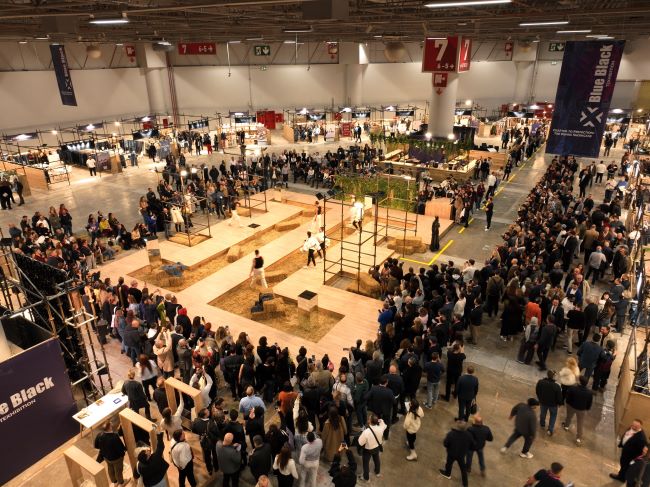
Texhibition Istanbul 2025 reaffirmed its status as a leading international trade fair for fabrics, yarns, and textile accessories. Organized by ITKIB Fuarcılık A S in collaboration with the Istanbul Textile Exporters Association (ITHIB), the event took place from March 5-7 at the Istanbul Expo Center. It welcomed 22,623 visitors from 106 countries, with over 500 exhibitors showcasing their latest collections and technologies. A dedicated embroidery section was introduced for the first time, further expanding the fair's diverse offerings.
Turkish textile industry strengthens global position
Turkiye's textile and apparel industry continues to establish itself as a global leader, with an export volume of $32.1 billion. Minister of Trade Omer Bolat highlighted the country’s standing among the world's top six textile exporters and as the EU’s third-largest supplier. Texhibition Istanbul plays a crucial role in reinforcing this position by promoting innovation and design expertise on an international scale.
TIM President Mustafa Gultepe emphasized the industry's focus on digitalization, sustainability, and long-term strategies to remain competitive. With an integrated supply chain from cotton to ready-to-wear, Turkiye boasts over 20,000 manufacturers committed to fast, ethical, and eco-friendly production. The sector saw a 20 per cent increase in textile exports in 2024, reaching $15 billion across 212 countries and regions.
Texhibition Istanbul featured a wide range of exhibitors, including established brands such as BTD, Bossa, Gulle, Hefa, Iskur, Karafiber, KuçukÇalık, Kıvanç, Kipaş, Migiboy, Menderes, Narteks, and Yunsa. Hall 8 was dedicated to leading yarn and fiber manufacturers like Diktaş, Ensar, Karafiber, Sasa, and Tepar. The newly introduced embroidery section in the same hall featured 14 exhibitors, including Estar Broche-Akspa Tekstil, Antik Dantel, İpek Tül, and İzmir Brode.
The denim sector also took center stage at the Blue-Black Denim Hall 7, where 21 leading companies, including Bossa, Isko, Kipaş, and İskur, presented their latest sustainable denim innovations. The Blue-Black Denim Show, alongside creative installations and workshops, made this one of the most dynamic sections of the fair. Innovative collections showcased advancements such as metallic-shimmering fabrics and vintage-reworked denim, leading to increased interest from EU buyers in Turkish denim products.
Innovation and sustainability drive the industry forward
Texhibition Istanbul 2025 showcased cutting-edge textile innovations, reinforcing the industry's commitment to technological advancement. The Innovation Hub, curated by designers Arzu Kaprol and Filiz Tunca, featured innovative developments such as transformative denim fabrics that change color upon treatment, an interactive dress with ultra-thin light circuits, and eco-friendly materials derived from pomegranate peels.
A key highlight was MYTH AI, a startup specializing in AI-driven pattern creation and design adaptation for manufacturers. Texhibition Trend Lab further emphasized how innovation is shaping sustainable textiles, blending futuristic aesthetics with practical functionality.
Sustainability remained at the core of the fair, with numerous exhibitors showcasing eco-friendly production methods. Karafiber presented its Ecocell Lyocell fibers, made from sustainably grown wood, while Korteks introduced a polymer recycling plant that produces polyester fibers from recycled plastic bottles. Digital integration also played a role, with Isik Etiket unveiling smart textile labels featuring QR codes that provide material composition, care instructions, and production details. These labels, made from recycled paper and embedded with seed paper tags, contribute to a zero-waste solution, allowing users to plant them instead of discarding them. Since 2022, Isik Etiket’s initiative has resulted in the planting of over 6,069 seedlings.
The ReValue Stock Hub provided a sustainable business platform for marketing surplus fabrics. Through physical and digital presentations, it facilitated customized business opportunities for buyers while reducing industry waste.
A premier hub for trade and networking
Texhibition Istanbul 2025 successfully served as an international hub for trade, fostering connections between manufacturers, designers, and buyers. The fair recorded a 30 per cent increase in international visitors compared to September 2024, with the EU accounting for 41.3 per cent of attendees. Prominent buyers, including Joseph Ribkoff and Simons from Canada, Nike and Alexander Wang LLC from the USA, Asos PLC and Reiss Ltd from the UK, and Ferrotex Industrial and Puntex from the Dominican Republic, participated in business networking sessions with exhibitors.
Ahmet Oksuz, Chairman of ITHIB, expressed pride in hosting Texhibition Istanbul for the seventh time, emphasizing its role in elevating Turkiye’s presence in the global textile market. Vice Chairman Fatih Bilici highlighted the country’s status as the world’s fifth-largest textile exporter and commended Texhibition Istanbul for connecting Turkish manufacturers with global buyers. He underscored the event's focus on sustainability, digitalization, and creative innovations as key factors shaping the future of the textile industry.
With its strong emphasis on sustainability, technology, and global networking, Texhibition Istanbul 2025 reaffirmed its position as a key meeting point for the international textile industry, driving the sector toward a more innovative and eco-friendly future.
Expanding its production, Sanathan Textiles is setting up a new Greenfield polyester yarn manufacturing facility in Wazirabad, Punjab.
To be set up through the company’s subsidiary, Sanathan Polycot, the facility will be developed with an investment of Rs 726 crore on 80 acre. On becoming operational, it will triple Sanathan Textiles’ production capacity from 550 to 1,500 tons per day.
Driven by the anticipated growth in the Indian textile and apparel market, this expansion is fueled by increasing disposable incomes, urbanization, online retail growth, and a shift towards man-made fibers and technical textiles. The plant’s strategic location in Wazirabad’s Industrial Park provides proximity to key markets like New Delhi, Ludhiana, and Rajasthan, which currently contribute 30 per cent of the company's revenue. This will help the company reduce transportation costs and improve delivery efficiency for Sanathan Textiles’ extensive product range of over 14,000 yarn varieties.
Sanathan Textiles also plans to integrate fabric weaving or knitting divisions at the Punjab facility to add value on-site. Additionally, the company will establish an in-house production unit for specialized raw materials used in technical textiles and industrial yarns, enhancing its portfolio of value-added products.
Having strong relationships with major consumer brands, including Welspun India, Page Industries, and Siyaram Silk Mills, this expansion will help Sanathan Textiles strengthen its market position and meet the increasing demand for its diverse yarn products.


